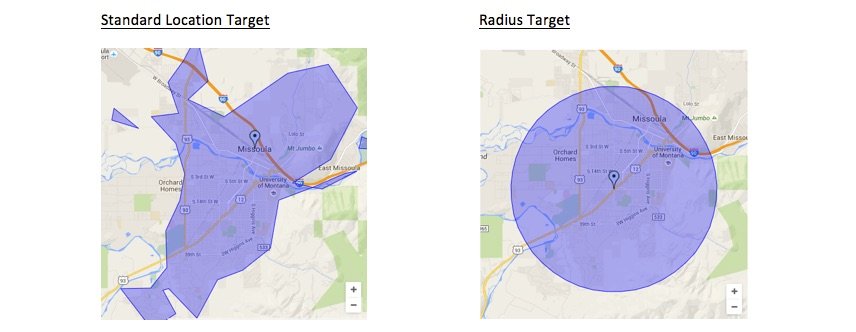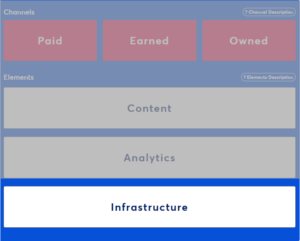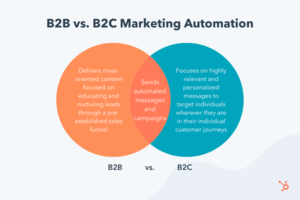Updated on October 28, 2021 to include new information.
Many businesses depend on potential customers among the local population to physically enter a specific location and spend money; restaurants and service shops are two of the most prominent examples. For many of these businesses investing in paid search ads, a typical B2C or B2B strategy just won’t do. Budgets might be extremely tight, and every penny needs to count, especially for small businesses. So, how do you execute a winning local PPC strategy when there’s such little room for error?
Well, we’ve got an answer for you, and it’s easier than you think. In this post, we’re going to cover the key elements to a successful local PPC strategy, provide a few tips on how to execute it, and show you what to expect after you execute these changes.
In Search Campaigns, Radius Targets Are Key
If you have a location in a large city or multiple locations that are in close proximity, you may find that city location targeting isn’t practical. Furthermore, using more specific targets, like zip codes, may be more of a pain than they’re worth. The good news is that there is another option: radius targets.
The single most important element to winning with local paid search is the utilization of radius targets. Instead of a predefined location target built into Google Ads already (i.e. country, city, zip code), radius targets are custom location targets defined by the advertiser, centered on a specific location.
Why are radius targets so awesome? There are two important reasons:
- Radius targets allow for greater flexibility in where exactly your ads will show up. If the borders of a specific town, neighborhood, or zip code aren’t sufficient, radius targets can often resolve any issues you’re having with regards to location targeting.
- The signals Google Ads uses when determining if someone is within a custom radius target often rely on physical indicators such as WiFi hotspots and GPS. When using predefined location targets, Google also refers to a user’s current and historical location data, which can limit ad impression volume.
We’ve tested this at Portent and we’ve consistently seen between 10%-15% more overall ad impressions when using radius targets versus using only predefined targets for a given physical area. You can use both of these location target types yourself; have them overlap with each other and see just how many impressions and clicks the radius target gets in addition to the standard target even as they both cover roughly the same area.
The Importance of Conversions
I cannot stress this next point enough, so I’m literally going to repeat it three times:
- Have an on-site conversion that correlates with in-store success.
- Have an on-site conversion that correlates with in-store success.
- Have an on-site conversion that correlates with in-store success.
Did you get that? Because it’s really, really important.
There needs to be some action on your website a user can take which indicates they’re likely to actually visit your physical location. This could be somebody clicking a “Get Directions” button or clicking your phone number to call you directly. Just as important, you need to be able to track these conversions accurately using your SEM platform, an Analytics platform, or a combination of both.
How else will you know the money you’re investing in PPC is actually working to drive people physically to your place of business? Trick question: you won’t.
Other Elements of a Successful Local Paid Search Strategy
Radius targets and conversions are important, but they’re not the only factors that will make or break a local PPC strategy. Here are some more things to keep in mind:
- Show ads to people in your targeted location only – The default setting in Google Ads will show ads to users in–or searching for–your targeted location(s). When it comes to utilizing a budget most efficiently, it’s safest to switch that setting over to target only users physically in your targeted location(s).
- Create a campaign template – For businesses with multiple locations, create a campaign template (or set of templates) so it can be used on a one-store-per-campaign basis. This way, you can keep your account organized, your campaigns consistent, and be able to devote specific amounts of budget toward any given location.
- Enable Location Extensions – Location Extensions in Google Ads use your Google My Business (GMB) profile data to generate your business’ address alongside your text ad and/or as sponsored pins on Google Maps. This lets users know where your business is located right on the results page versus having to look for it on your website.
The Proof
This all sounds great in theory, right? Now, here’s the proof this all actually works.
We have a couple of current, large-scale examples at Portent where we’ve proven this strategy (on top of many small business accounts). The businesses behind these examples will be anonymous, but the data is real. Here’s how two examples compared three months prior to executing this strategy versus the following three months:
Example 1

Example 2

In both cases, conversions went up, the average cost per conversion decreased, and conversion rates increased, all by noticeable margins. As a result, PPC influenced more people to physically go to these places and grow these businesses. And that, really, is the whole point to this entire post: utilize these tactics to make more money.
Additional PPC Tactics
Outside of your typical paid search campaigns, there are other tactics you should consider utilizing within Google’s product offerings. The more of these you utilize, the more visible you’ll be online, and the more likely you’ll drive new business to your location(s).
Google My Business
Creating a Google My Business (GMB) profile for your business is free and should be considered an absolute necessity. You will need an active profile to utilize location extensions within Google Ads and. You will also need an active profile to let Google know important information about your business that it can then relay to users through organic search as well as paid search. Be sure you claim your business with Google and maintain your profile accordingly.
Google Local Campaigns
Google Local Campaigns are a cross-network campaign type which is designed to reach potential customers in your vicinity through automated bidding and ad placements. Your ads from this campaign type can appear on Google search, Google Maps, YouTube, the Google Display Network, and your business profile. This campaign type requires a GMB link up with Google Ads (as do location extensions). The one drawback with this campaign type is that there is a minimum monthly spend threshold which may rule some small budget advertisers out.
Google Local Services Ads
Google Local Services Ads are a call-only ad type for local service providers that are hosted on a different platform outside of your standard Google Ads account. These ads display at the top of a results page on the search network on mobile devices. For every call generated that produces a qualified lead for your business, you are charged a certain amount depending on the industry your business is in. Successfully creating a profile requires a GMB listing along with background checks on the owner and any field workers employed by your business. Once these checks are passed, your business is eligible to generate these ads with the Google Guaranteed badge that can give you extra credibility with potential customers.
In Conclusion
Local PPC is important and can be leveraged very successfully for brands of any size. You just need to make sure you’re utilizing the key elements which make it a success. Whether you’re looking to generate more top-of-funnel brand awareness or bottom-of-funnel lead acquisition, there are any array of solutions, campaign types, and tactics at your disposal to execute a successful local PPC strategy.
The post Executing a Successful Local PPC Strategy appeared first on Portent.




